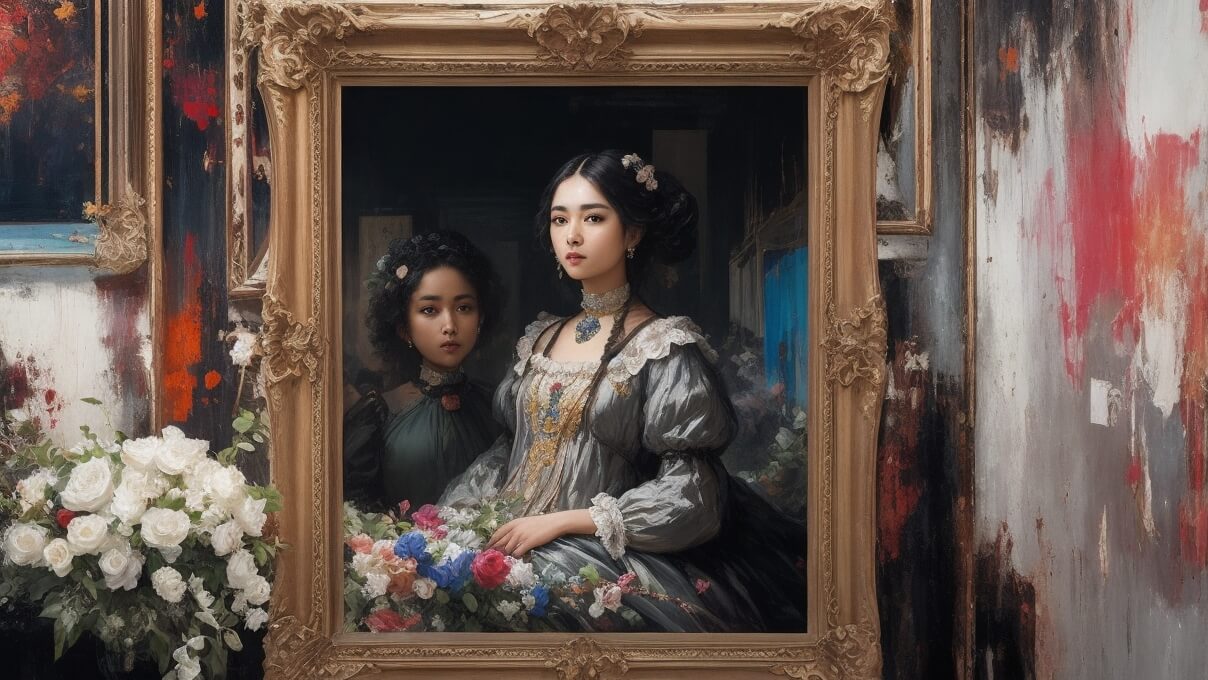Art as a Mirror: Reflecting Society's Complexities and Contradictions

Art has always been a mirror, reflecting the complexities and contradictions of the society it emerges from. It is a powerful lens through which we can examine our world, challenge preconceptions, and grapple with the multifaceted aspects of our existence. In this article, we delve into the profound role of art as a reflection of society's ever-evolving narrative.
Artists have long been the vanguards of social commentary, using their creativity to critique, provoke, and inspire change. Francisco Goya's "The Third of May 1808" stands as a haunting testament to the brutality of war. The stark contrast between the anonymous firing squad and the illuminated figure in the foreground, his face marked by terror and defiance, captures the human cost of conflict. Goya's work serves as a stark reminder of the horrors of war and the moral dilemmas it presents.
The power of art to shine a light on social injustice and inequality is evident in the works of Jacob Lawrence. His "The Migration Series" chronicles the mass movement of African Americans from the rural South to the urban North during the early 20th century. Through a series of vibrant and poignant paintings, Lawrence captures the hope, struggle, and resilience of those seeking a better life. It is a narrative of resilience in the face of adversity, a testament to the enduring spirit of the marginalized.
The art of protest has played a pivotal role in challenging societal norms and advocating for change. The feminist art movement of the 1960s and 70s, led by artists like Judy Chicago and the Guerrilla Girls, challenged the male-dominated art world and questioned gender stereotypes. Chicago's iconic installation, "The Dinner Party," celebrates the achievements of women throughout history while challenging traditional notions of femininity. The Guerrilla Girls used provocative posters and performance art to expose gender and racial biases in the art world. Their guerrilla tactics and anonymity sent a powerful message: art can be a catalyst for change.
The realm of street art has also emerged as a platform for social commentary. Banksy's work, characterized by its satirical wit and subversive messages, challenges the status quo. His "Girl with a Balloon" has become an emblem of hope and resistance. Banksy's art exists in the public domain, accessible to all, and serves as a reminder that art can transcend galleries and museums to engage with everyday life.
Photography, with its immediacy and authenticity, has documented pivotal moments in history. Dorothea Lange's haunting photographs of Dust Bowl migrants and Japanese American internment during World War II capture the human stories behind the headlines. Lange's "Migrant Mother" is an indelible image of resilience in the face of adversity. It is a reminder that art can bear witness to the human condition, serving as a testament to our shared history.
Contemporary artists continue to grapple with the complexities of our modern world. Ai Weiwei, the Chinese artist and activist, confronts issues of censorship, human rights, and freedom of expression. His work often blurs the lines between art and activism. "Dropping a Han Dynasty Urn" challenges the reverence placed on cultural heritage and the sacrifices made for artistic expression. It is a provocative act that forces us to question the value we assign to objects and ideas.
The medium of film has also been a powerful vehicle for social commentary. Ava DuVernay's "13th" is a searing documentary that examines the racial disparities within the American criminal justice system. Through a combination of archival footage and interviews, DuVernay sheds light on the systemic inequalities that persist to this day. It is a reminder that art can be a tool for education, advocacy, and change.
Art as a mirror is not limited to critique; it also serves as a celebration of culture, identity, and diversity. The works of Frida Kahlo, with their vivid self-portraits and exploration of Mexican identity, resonate with viewers worldwide. Kahlo's art is a celebration of individuality and a reflection of the rich tapestry of Mexican culture.
In the realm of literature, authors like Chimamanda Ngozi Adichie use storytelling to challenge stereotypes and amplify marginalized voices. Adichie's novel "Half of a Yellow Sun" explores the Nigerian-Biafran War and its impact on ordinary lives. It is a narrative that brings history to life and invites readers to empathize with the experiences of others.
Art as a mirror is a reminder that our world is complex, multifaceted, and ever-changing. It invites us to engage with the nuances of our society, to confront uncomfortable truths, and to envision a more equitable future. It challenges us to question, to empathize, and to take action.
As we stand before the mirror of art, let us recognize its power to reflect not only who we are but who we aspire to be. Let us celebrate the artists who dare to hold that mirror up to society, who use their creativity to spark dialogue and inspire change. Art as a mirror reminds us that we are not passive observers of our world but active participants in shaping its narrative.